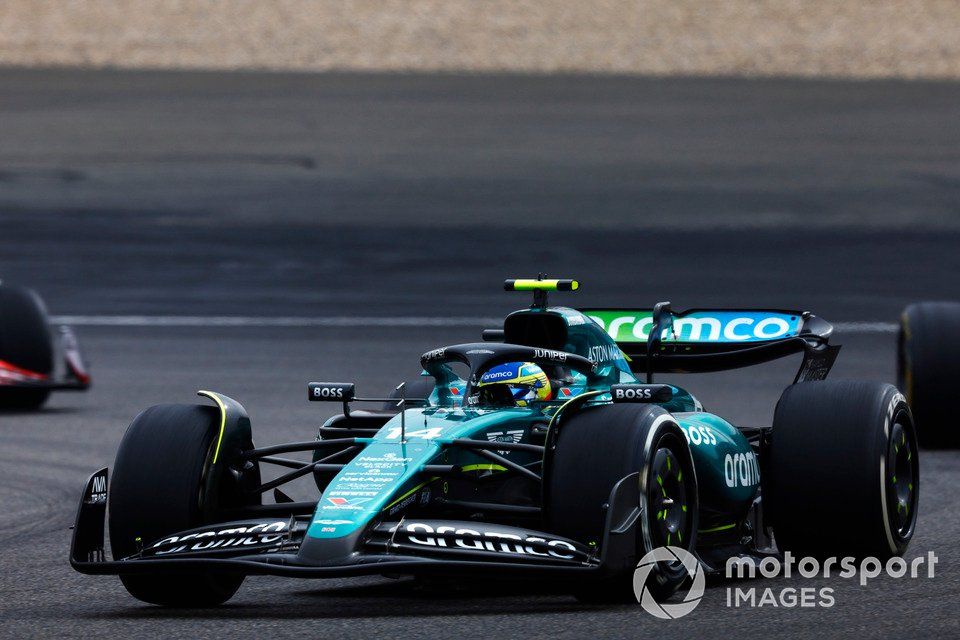The Shanghai round was the first event where F1’s latest sprint format has been deployed, with the parc ferme restrictions on car adjustments relaxed between the two Saturday sessions.
This opened the possibility for teams to run very experimental set-ups in the shorter races, especially for cars starting outside the top 10 on the grid, but in practice, the competitors felt any changes they could make were more limited, even if they might be considered aggressively hopeful.
“We had a lot of those discussions coming into the event of [regarding] rear wing level set-up [etc],” said Aston Martin performance director Tom McCullough. “But ultimately doing a 19-lap [sprint] stint is still hard and you can’t really make too big a change compared to the main race.”
McCullough also suggested the sprint-to-GP changes F1 teams made in China were actually relatively bigger than the adjustments to be made elsewhere to improve in-race tyre wear for the longer contests.
This is because of the Shanghai track’s altered surface and the teams lacking data with the new ground-effect cars for that venue pre-weekend.
“It was maybe bigger here just because we’ve not been here for so long,” he added.
“The 2019 cars when we were last here had rear ride heights three times the rear ride heights we are running now and the stiffness of the car, everything’s so different the tyres, the aero.
“We all simulated and prepared, [and] the track grip itself was maybe worse – more rear limiting than in the past which I think we kind of predicted just to have these tyres and how the generation of cars are working.
Fernando Alonso, Aston Martin AMR24
Photo by: Zak Mauger / Motorsport Images
“[Aston] sort of walked where we thought, ‘you get one run [in FP1], bang you make some changes before sprint quali’.
“But after the sprint race really you learn the most in high fuel long running. A 30-odd-kg long run, you learn.
“And then we were like, ‘Right, what’s going to happen when we put another 70kg of fuel in, which are the tyres we’re gonna have to look after what do we need to do, bang, make some changes’.
“They weren’t big changes, really. Everyone up and down the pit lane would have made [those] changes.”
The Shanghai weekend’s most dramatic set-up adjustment results turnaround came via Haas’s Nico Hulkenberg, whose sprint set-up “actually made the car worse”, per Haas team principal Ayao…
Click Here to Read the Full Original Article at Motorsport.com – Formula 1 – Stories…

